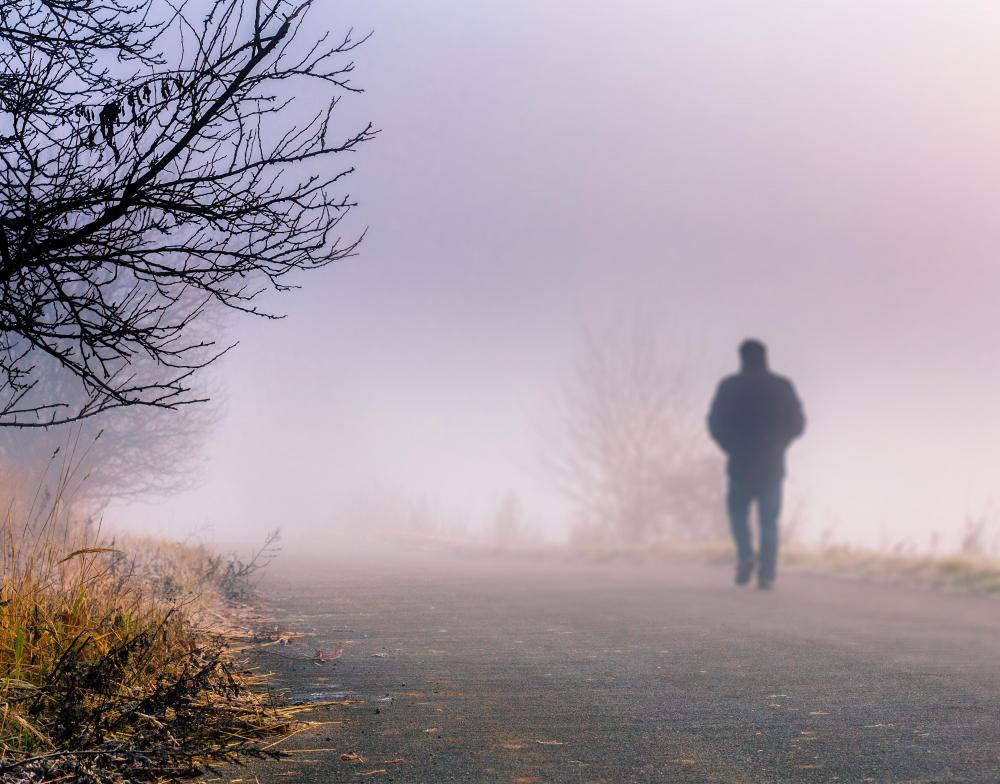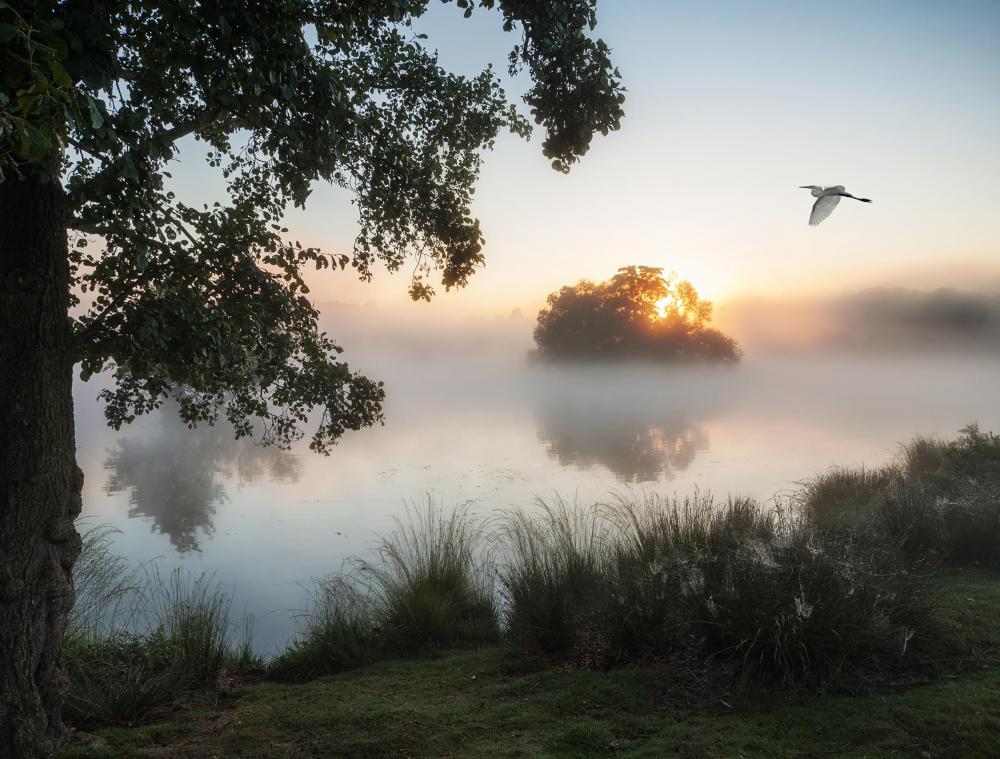At AllThingsNature, we're committed to delivering accurate, trustworthy information. Our expert-authored content is rigorously fact-checked and sourced from credible authorities. Discover how we uphold the highest standards in providing you with reliable knowledge.
What Causes Fog?
Fog is a meteorological phenomenon caused by a supersaturation of the air, so that it can no longer hold water vapor. The water vapor precipitates out into small droplets of condensation, or fog. The processes are similar to those which make clouds, although fog forms close to the ground, rather than higher up in the atmosphere. Because visibility can be limited in foggy conditions, care should be taken when driving or walking, especially since it tends to muffle and distort sound, potentially rendering people unaware of hazards.
Whenever the air reaches a point of extremely high humidity, fog occurs. Most commonly, it happens when the air rapidly cools, causing condensation to form. There are a number of types, named for the conditions which create them. Drivers who are navigating in it should use low beams or fog lights, rather than high beams, which will simply reflect from the water droplets and create glare.

Along the shores of oceans and large bodies of water, advection fog happens when moist air from the water passes over the cooler surface of the land. Frequently, warmer weather inland sucks the moist air across the land, creating a thick blanket of fog. This happens most frequently around the ocean because the salt increases the humidity, and condensation can form at a much lower humidity level around salt.

Another common type is radiation fog. This type usually occurs after dark, when the Earth radiates heat outwards. As the heat rises, it is cooled, causing saturation conditions. Radiation fog usually clings close to the ground, and disappears by mid-morning, once the day warms up enough to dissipate it. A variation on this, tule fog, is found in the Central Valley of California. Tule fog happens when cold mountain air sinks into a depression such as the valley at night. Warmer air above it presses the cold air down, causing fog to form and linger for days. This type occurs in the fall and winter, when conditions on the mountains are colder.

A rare type called ice fog can only be formed in extremely cold conditions such as those at the Arctic and Antarctic. When the ambient air temperature is substantially below the freezing point, but still humid, the water droplets which would normally form fog turn into small ice crystals instead. Ice fog can be dangerous to drive in, as the crystals cling to windshields and headlights.
Frequently Asked Questions
What is fog and how does it form?

Fog is a cloud that forms at the Earth's surface, typically when the air becomes saturated with water vapor and condenses. This often happens when cooler air comes into contact with warm, moist air, or when air cools to its dew point near the ground. The tiny water droplets suspended in the air scatter light, causing the characteristic visibility reduction.
What are the different types of fog?
There are several types of fog, each with unique formation conditions. Radiation fog occurs on clear nights with calm conditions, allowing the ground to cool rapidly. Advection fog is common in coastal areas when warm, moist air moves over cooler water. Valley fog forms in mountain valleys, and upslope fog appears when moist air is lifted up terrain. Ice fog contains ice crystals and occurs in very cold conditions.
How does geography influence the formation of fog?
Geography plays a significant role in fog formation. Coastal regions often experience advection fog due to sea breezes cooling the warm air. Valleys are prone to fog as cold air settles and condenses moisture near the ground. Mountains can induce upslope fog as air rises and cools. Urban areas may see more fog due to additional moisture and heat sources.
Can fog be predicted?
Yes, fog can be predicted by meteorologists who monitor temperature, humidity, wind patterns, and geographic features. When conditions are favorable for fog formation, such as clear skies, calm winds, and high relative humidity, forecasts can include the likelihood of fog. Advanced models and satellite data assist in predicting its occurrence and density, aiding in transportation safety.
What is the difference between fog and mist?
Fog and mist both consist of tiny water droplets suspended in the air, but they differ in visibility. Fog is denser, reducing visibility to less than 1 kilometer (0.62 miles), while mist causes lesser visibility reduction, allowing one to see further than 1 kilometer. The distinction is based on the extent to which the droplets scatter light and impair visibility.
How does fog affect the environment and human activities?
Fog has ecological benefits, such as providing moisture to plants in arid climates. However, it can also pose challenges to human activities, particularly transportation, by reducing visibility and increasing the risk of accidents. Fog can disrupt air, road, and sea travel, and necessitates the use of fog lights and other safety measures. In urban areas, fog can combine with pollutants, creating health hazards.
AS FEATURED ON:
AS FEATURED ON:














Discussion Comments
Interesting. This will help me in my research in school now.
in addition to other causes light wind of 3-6 miles per hour is a must.
Radiation fog forms only on calm, clear and cool nights. If it is windy the air will be mixed up and prevent fog from forming.
Similarly if it is cloudy, fog will not form, because the clouds in effect blanket the earth, preventing the heat from escaping.
Post your comments